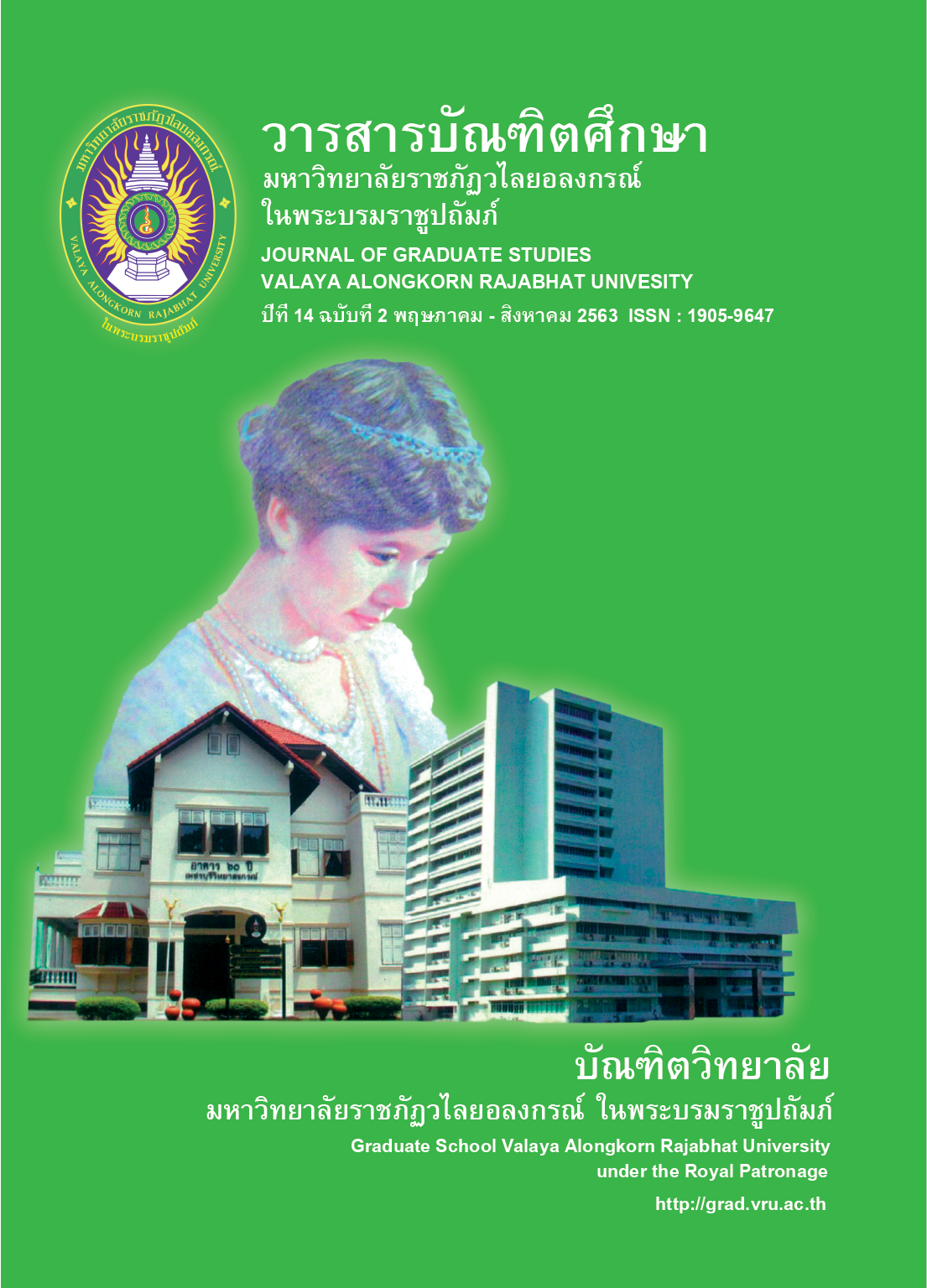THE EXPECTATION AND REALITY OF BLENDED INSTRUCTION OF STUDENTS AT FACULTY OF EDUCATION IN RAMKHAMHAENG UNIVERSITY
Main Article Content
Abstract
The objectives of this research were: 1) to study the expectation of blended instruction for students at the Faculty of Education in Ramkhamhaeng University, 2) to study the reality of blended instruction for students of the Faculty of Education at Ramkhamhaeng University, and 3) to compare the expectation and the reality of blended instruction for students of the Faculty of Education at Ramkhamhaeng University. The sample of this study was 247 students studying teaching profession in the academic year of 2018 in Faculty of Education at Ramkhamhaeng University. The researcher used the strategy proposed by Krejci and Morgan to calculate the sample size and employed simple random sampling to select the participants. The research instrument was a 5-point Likert scale questionnaire comprising two parts: 1) general background information, 2) the reality of blended instruction. The reliability of the instrument calculated by Cronbach Alpha Coefficient was at 0.97. Statistics employed for data analysis were mean, and standard deviation.
The findings were as follows:
1) The findings showcased that as for the expectation of blended instruction, the mean was 4.87, and the standard deviation was 0.56.
2) The expectation was at the highest level. As for the reality of blended instruction, the mean was 3.92, the standard deviation was 0.91.
3) The reality of classroom management was at the high level.
Article Details
บทความทุกเรื่องได้รับการตรวจความถูกต้องทางวิชาการโดยผู้ทรงคุณวุฒิ ทรรศนะและข้อคิดเห็นในบทความวารสารบัณฑิตศึกษา มหาวิทยาลัยราชภัฏวไลยอลงกรณ์ ในพระบรมราชูปถัมภ์ มิใช่เป็นทรรศนะและความคิดของผู้จัดทำจึงมิใช่ความรับผิดชอบของบัณฑิตวิทยาลัย มหาวิทยาลัยราชภัฏวไลยอลงกรณ์ ในพระบรมราชูปถัมภ์ กองบรรณาธิการไม่สงวนสิทธิ์การคัดลอก แต่ให้อ้างอิงแหล่งที่มา
References
Chantanarungpek, K. (2005). Development of web-based instruction model blended with cooperative learning in mathematics for upper primary school students. Faculty of Education Chulalongkorn University.
Chiddee, K. (2015). kānsưksā saphāp læ panhā khō̜ng kānčhatkān rīanrū rāiwichā kānsāng sœ̄m sukkhaphāp læ kān pō̜ngkan kān čheppūai khō̜ng naksưksā phayābān [The study and the problem of learning management courses for health promotion and illness prevention of nursing students]. Princess of Naradhiwas University Journal. 7(3), 121-132
Cronbach, (1990). Essentials of psychological testing. (5th ed). New York: Collins Publishers.
Hanpipat, N. (2010). kān wikhro̜ phahu radap patčhai thī song phon tō̜ khwāmsāmāt nai kān khit wikhro̜ khō̜ng nakrīan chan matthayommasưksā pī thī sām čhangwat chīang rāi [Multi-level analysis of factors affecting analytical thinking ability of Mathayom Suksa 3 Students in Chiang Rai Province]. Thesis and dissertation, Chiang Mai University.
Hargis, J. (2005). Collaboration, Community and Project-Based Learning - Does It Still Work Online. Instructional Media. 32(2), 79-84.
Jintaweeporn, P. (2019). Authentic Assessment. Journal of Education. 30(1), 22-33
Compulsory Education Act B.E. 2002. (2002). phrarātchabanyat kānsưksā hǣng chāt sō̜ngphanhārō̜isīsipsō̜ng læ thī kǣkhai phœ̄mtœ̄m (chabap thī sō̜ng) Phō̜.Sō̜. sō̜ngphanhārō̜isīsiphā [Compulsory Education Act B.E. 2002 and as amended (Version 2) B.E. 2002].
Srienormous, E. and Yuktanan, S. (2003). kānʻō̜kbǣp khrư̄angmư̄ wat læ pramœ̄n tām saphāp čhing [Designing measuring tools and assessing according to actual conditions]. Bangkok: Bookpoint.
Srisa, B. (2002). kānphatthanā kānsō̜n [Teaching development]. Bangkok: Children club.
Thorne, K. (2003). Blended learning: how to integrate online & traditional learning. London: Kogan Page.


